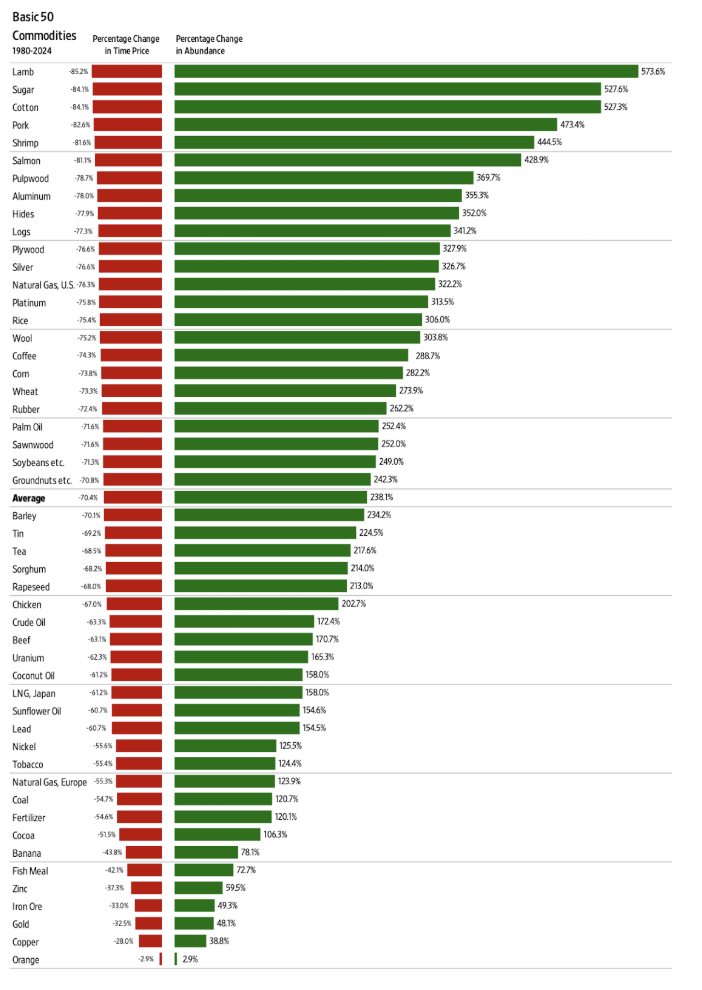Yesterday we showed definitive evidence that the middle class over the past 40 years hasn’t disappeared, but has grown more affluent.
Another way of measuring rising living standards is to calculate how many hours Americans have to work to obtain things. The Cato Institute’s Simon Abundance Index is named for Julian Simon, one of our heroes for slaying resource-scarcity doomsayers. It shows the change since 1980 in the prices of commodities, measured in hours worked at the median wage. Americans can now buy about twice as much with their earnings than they could in 1980:
Time prices for individual commodities decreased, on average, by 70.4 percent between 1980 and 2024, ranging from −2.9 percent for oranges to −85.2 percent for lamb. That means that the average inhabitant of the planet saw their personal resource abundance increase by 238.1 percent, ranging from 2.9 percent for oranges to 573.6 percent for lamb. Put differently, the same length of work that allowed the average inhabitant of the planet to purchase 1 unit in our basket of 50 commodities in 1980 allowed him or her to buy 3.381 units in 2024.

